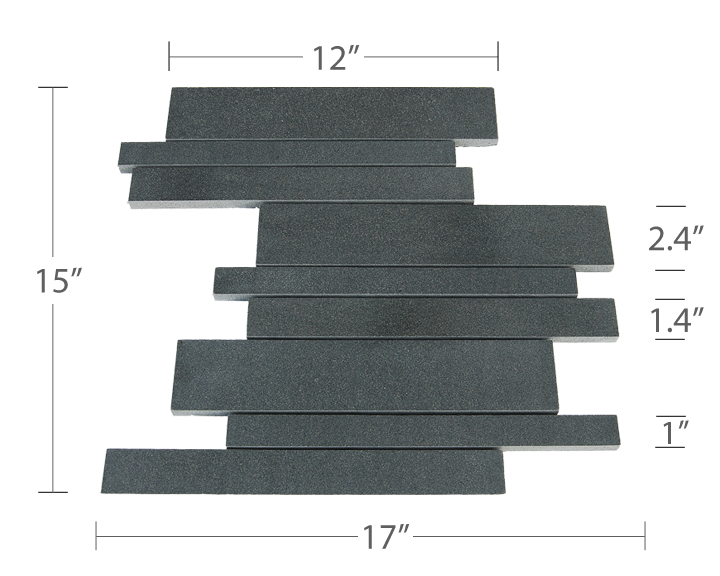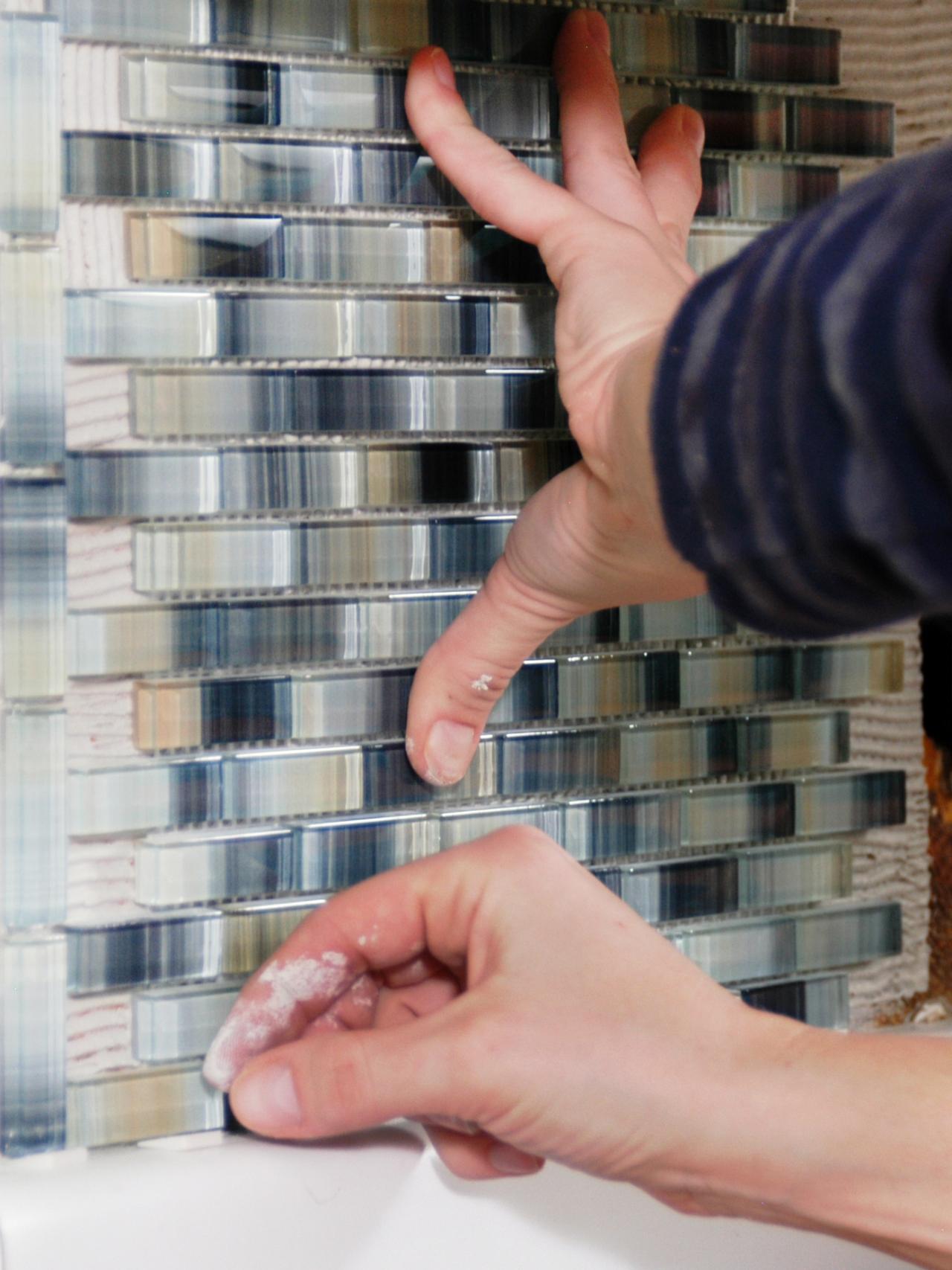How to Install Mesh Backed Tile
Mesh backed tile is a product both admired and despised in the industry. Manufacturers and consumers love it because it allows for intricate tile patterns to be assembled and installed creating beautiful tile mosaics that were previously only achieved via an artisan hand laying the pieces. On the flip side, mesh backed tile can drive unqualified installers crazy if they don’t do simple things like plan accordingly for the pattern, or use quality setting materials and solid installation techniques to ensure a successful installation. Here’s a detailed step by step guide on how to successfully install mesh backed tile like our Lynia Interlocking Series.
Step 1: Understanding The Pattern
Tips & Tricks
Understand the pattern of the mesh backed tile and how that pattern works with the space to be tiled. This is a critical step so often overlooked! Mesh backed tiles that don’t have a repeating pattern vertically can result in more waste. A good way to know if your tile has a repeating pattern vertically is to put two tiles next to each other and flip one of them upside down. If the horizontal lines of the two tiles still match up then your tiles have a repeating pattern.
How Patterns Affect Wastage
For mesh backed tiles without repeating patterns vertically, its important to plan for waste accordingly. For example, if each of your tile units is 12” tall and you are are installing them on an 18” tall backsplash, you’ll install one full unit, then cut the next unit in half to cover the 18”. Since the half of the unit that was cut off does not match the pattern on the lower half it’s likely that the cut off piece will end up as waste. So it’s critical to understand your pattern and how that fits in the space to know how much to order.

Step 2: Get the Right Substrate
Not All Subtrates are Equal
Generally speaking any vertical tile installation should be done on cement board or equivalent. Drywall is not always designed to support the added weight of tile. Cement board can always be layered over existing drywall to create a suitable tile substrate and any substrate for tiling should be rigid, level, plumb, and free of any contaminants that would prevent a good bond.
Step 3: Have the Right Tools
Every project is different, plan ahead.
A few buckets for mixing and wipe down, a tile saw, paddle mixer, trowels, spacers, level, grout float, and a clean up sponge are all standard equipment for a successful mesh backed tile installation. Depending on the type of tile being cut, for example stone vs glass vs porcelain, a different blade or other cutting tool might be needed for the cuts.
Step 4: Use the Proper Thinset
The manufacturer of the tile should provide guidelines for what type of thinset should be used for installation. Generally speaking a thinset designed to meet or exceed ANSI 118.4 and ANSI 118.11 standards is suitable for most mesh backed tile installations.
Step 5: Mix and Set
Nitty Gritty Details on Stone Setting
Follow the thinset manufacturer’s instructions on mixing the thinset to the desired consistency and don’t mix more thinset than can be used in approximately a 15 – 20 minute time period. Trowel the thinset onto the wall and notch using the appropriate size groove for the tile size. Depending on the size and weight of the tile, a coat or “back buttering” of the back of the tile with thinset might be recommended to ensure full adhesion.
Set the tiles onto the wall making sure to stay level and add spacers against hard surfaces like a floor, countertop, or windowsill to allow for a small expansion gap that can later be filled in with caulk. When necessary use spaced between sheets or to maintain spacing on heavier individual tile strips.
Twist the tile during setting to make sure it sits firmly and fully into the thinset. This is especially important for mesh backed tile to make sure the mesh in no way interferes with a solid bond between substrate and tile.
Clean any thinset off the face of the mesh backed tiles while installing to keep your job clean.

Step 6: Grout
After the thinset has cured, generally after 24 hours, mix the grout according to the manufacturer’s recommendation. Due to the thin lines of most mesh backed tiles, unsanded grout is commonly used, but check with the manufacturer of the tile for direction on what type of grout can be used. Spread the grout using a rubber grout float and work the grout into the spaces making sure all the joints are filled. After about 15-20 minutes, come back with a slightly damp sponge to remove the grout film from the surface of the tile.
Step 7: Ongoing Care
Follow your tile manufacturer’s instructions for ongoing care, which might include sealing certain types of natural stone or a recommendation on types of cleaners to be used.
.png)



